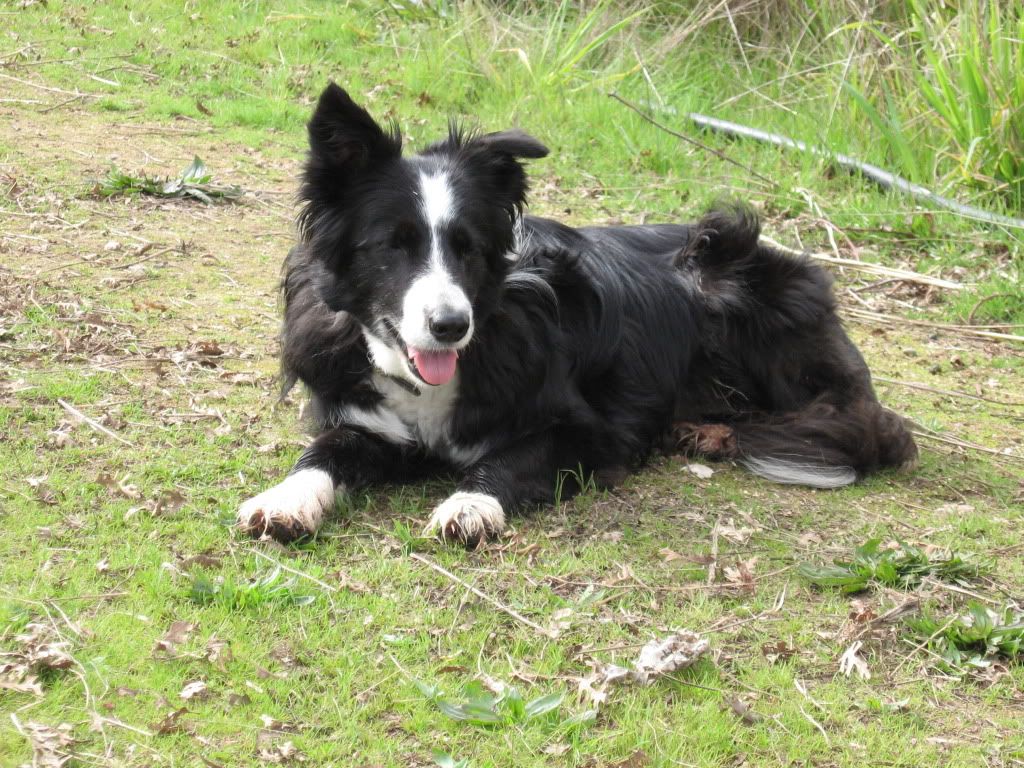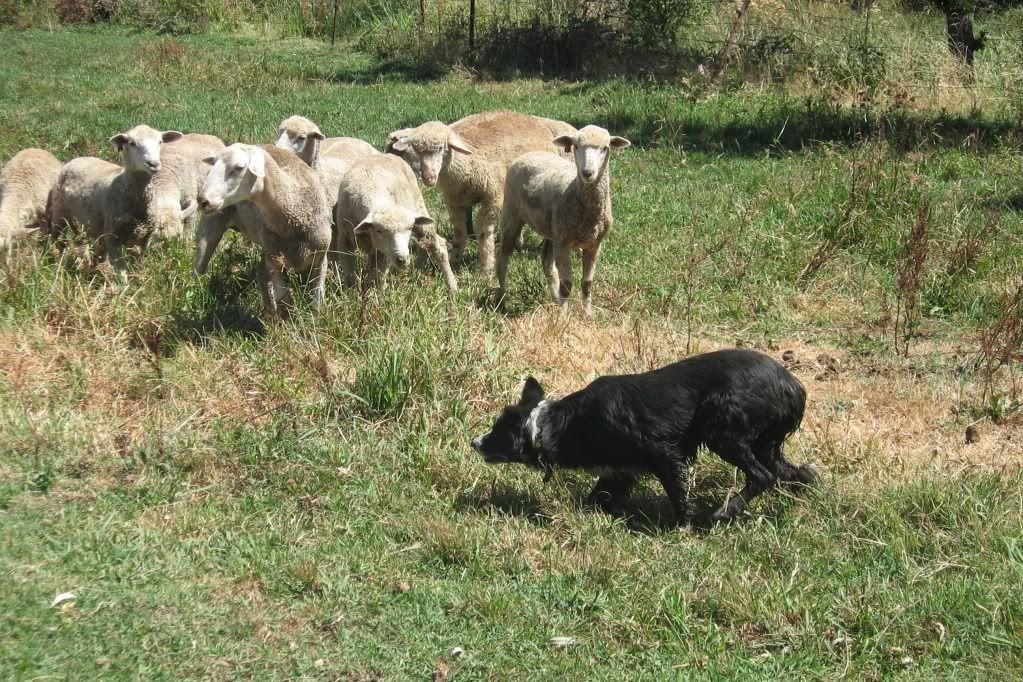
Our friend Ellen emailed us last night that she'd had to euthanize Paige, her oldest border collie. Just over three years ago, Ellen let us use Paige, who was then 11 years old. Paige had been an incredible trial dog. While she had slowed down a bit, she was still an incredible farm dog. I learned an incredible amount about working dogs from her.
Paige was a character. I picked her up from Ellen at a sheep dog trial in Zamora in mid February. On the drive home, she proceeded to eat the crackers Sami had packed for my lunch. That night, she pulled a tray of cookies off the kitchen counter, too. During her first month with us, she also destroyed a tri-tip we had thawing on the counter. We've since decided that Ellen's dogs are genetically coded to counter-surf.
Ellen warned us about Paige's intolerance for children, especially small children. Our youngest daughter, Emma, was 3 years old at the time. She and Paige became fast friends. One of my favorite photos from this time is of Emma reading "The Very Hungary Caterpillar" to Paige on our kitchen floor. In November that year, our oldest daughter, Lara, trialed Paige in Auburn and in Plymouth. Their teamwork and determination brought tears to my eyes.
For nearly a year, Paige was my everyday companion in my work with our sheep. While I purchased another dog through Ellen, Paige was my most reliable helper. In all honesty, I probably got in Paige's way more than I helped her - she knew things about working sheep that I'll probably never understand completely. She was the perfect introduction to the culture of working sheep dogs for all of us. She wasn't a very big dog physically, but she had an enormous heart and a huge personality.

The last time I worked Paige, I realized that she truly needed to retire. We had sheep out near a county road after dark. Paige gathered them and put them back into their pasture, but she could neither hear nor see me when I tried to call her off. I spent a frantic 45 minutes in the dark looking for her. I knew that she needed to retire for her own safety.
Ellen picked Paige up from us on the day that we received Mo, a puppy from Ellen's Emer. We saw her periodically over the next 2 years - usually in Tulelake but at least once in Auburn. Every time we saw her, Paige seemed to recognize us. As her health deteriorated, she still wanted to work - she couldn't hear or see very well, but she still knew her job.
Dogs are like teachers in my experience - we are only blessed with truly exceptional teachers (and dogs) a few times during our lifetimes. Paige was one of those dogs. We are so grateful to Ellen for sharing her with us. We'll miss her.




